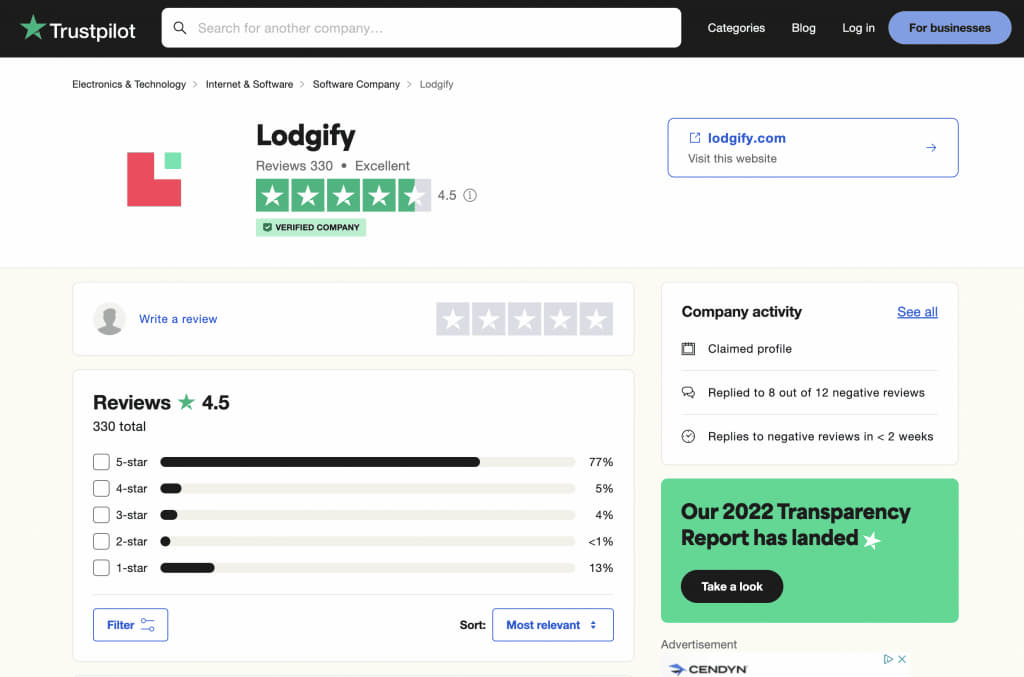What do you do when one of the two tenants, who are on a lease for rental property together, decides to move out? It's an awkward – and potentially tricky – situation. As the landlord or property manager, you must ensure that all legal agreements between yourself and both tenants have been respected before having one tenant vacate the premises.
This article will provide guidance on what steps to take if one of the two tenants on lease one leaves while both are still in charge of a single dwelling. We'll explain how to handle things like rent payments, responsibilities associated with shared space/utilities/furnishings, and more in order to make sure everybody remains protected throughout this process.
What To Do When One Tenant Leaves
When a tenant decides to leave a rental property, the landlord or property manager should take a few steps to manage the situation effectively.
The first step is to review the lease agreement to understand the tenants' responsibilities and liabilities. If both tenants have signed the lease, they are typically jointly and severally liable for paying the rent and complying with the lease agreement's terms and conditions. However, it's important to consult with a legal professional to ensure that the lease agreement complies with local laws and regulations.
Under joint and several liability, if one tenant leaves, the landlord can still hold the remaining tenant responsible for paying the entire monthly rent until the lease ends, even if the co-tenants had agreed to split the rent. However, the landlord should communicate with the remaining tenant to understand their situation and determine the best course of action.
The landlord should ask the remaining tenant if they wish to stay in the property, and if they are aware that they will be responsible for paying the total monthly rent until the lease term ends. It's also crucial to assess whether the remaining tenant can afford to pay the rent in full now that their roommate has left. If the remaining tenant is unable to pay the rent, the landlord may need to explore other options, such as finding a new tenant or adjusting the rent.
Additionally, the landlord should inquire if the remaining tenant has another potential roommate who could move in to help share the rent. If the remaining tenant wishes to leave the property as well, the landlord may need to consider finding a new tenant or negotiating an early termination of the lease agreement.
After One Tenant Departs, Several Typical Scenarios May Arise
Here are some of the most common situations that may occur:
1. The remaining tenant continues to pay the rent
In an ideal situation, the tenant who stays behind will continue to pay the rent for the entire lease period. However, it's important to review the tenant's file and screening reports to ensure that they can afford the rent on their own.
One crucial factor to consider is the tenant's rent-to-income ratio, which compares their gross monthly income to the monthly rent:
Rent-to-income ratio = Monthly rent / Gross monthly income
For instance, if a tenant's gross monthly income is $5,000, and the monthly rent they pay is $1,500, the resulting rent-to-income ratio would be 0.3. Landlords usually prefer a minimum ratio of 0.3, which implies that 30% of the tenant's income is allocated towards rent.
While the average rent-to-income ratio can differ from one city to another, most landlords seek a ratio of at least 0.3. However, in a scenario where two tenants have a combined gross monthly income of $5,000, but only one tenant earns $3,000, the adjusted rent-to-income ratio would be 0.5. This suggests that the remaining tenant would be utilizing 50% of their income to pay for rent, which could leave them with little to cover other expenses such as utilities, groceries, car payments, and credit card bills.
Therefore, even if the remaining tenant claims they can afford the rent independently, it may not be practical given their lifestyle and other expenses.
2. Tenant Looks For Another Roommate
Another possibility is to allow the tenant to seek out a new roommate. In such cases, it's important to inform the remaining tenant that the new roommate must go through the tenant screening process, which involves verifying employment and rental history.
The basic steps of tenant screening include:
- Filling out a rental application
- Conducting a background check, credit report analysis, and rental history check
- Confirming employment
- Communicating with previous landlords
One significant distinction between seeking a new tenant for an empty property and allowing the existing tenant to look for a new roommate is that there may be fewer options available for the latter.
As a landlord, it's not your responsibility to locate a new roommate for the remaining tenant, but you should ensure that any potential roommate is qualified to lease the property.
Moreover, the Federal Fair Housing Act prohibits landlords from screening or rejecting tenants on the grounds of sex, family status, national origin, color, race, religion, and disability. Additional groups may be covered by state and municipal regulations.
3. Remaining Tenant Vacates Voluntarily
A third option available to a landlord when one tenant departs is to request that the remaining tenant also vacate. Before taking any action, it's prudent to review the relevant state landlord-tenant laws to comprehend the landlord's rights.
For instance, if the tenant's rent-to-income ratio is 0.5 or higher, the remaining tenant may find it difficult to pay the monthly rent. Both the tenant and the landlord may be aware of this.
Rather than risking the possibility of having to evict the remaining tenant for non-payment of rent, requesting the tenant to leave may be a mutually beneficial solution for both the tenant and the landlord. After reaching an agreement with the tenant, document everything, including the mandatory move-out date.
On the day of departure, conduct a walk-through of the property with the tenant and complete a move-out checklist. By comparing this checklist with the move-in checklist filled out when the tenants first arrived, a landlord can determine if there is any damage caused by the tenants beyond the normal wear and tear. If any damage is found, the landlord may be able to use some or all of the tenants' security deposit to cover the costs.
After examining the relevant state landlord-tenant laws or discussing the situation with the property manager, the landlord can better understand how to manage the security deposit, account for any deductions, and the timeline for returning the remaining deposit to the tenants.
4. Remaining Tenant is Evicted
Finally, if all other options have been exhausted and the remaining tenant fails to comply with their lease terms, the landlord may be left with no option but to initiate eviction proceedings.
Again, it's important to review relevant state or municipal laws regarding eviction before taking any action. If such a situation arises, working closely with an experienced property manager or attorney can help ensure that the process is handled properly and in accordance with applicable law.
In some cases, if the remaining tenant has not paid rent for multiple months in a row, they may qualify as a “holdover” tenant who must be evicted through legal proceedings. While this is often an unpleasant situation for both parties involved, by following the proper procedures and remaining in compliance with all applicable rules, a landlord can successfully remove the tenant from their property.
Tips For Renting To Multiple Tenants
1. Clearly define roles and responsibilities: When renting to multiple tenants, it's essential for the landlord to clearly define the roles and responsibilities of each tenant in the rental agreement. This will help ensure that everyone is aware of their obligations from the start, and can help provide a recourse if issues arise later.
2. Screen all potential tenants: To minimize risk and ensure that quality tenants are living at your property, be sure to screen each tenant separately before they move in. This should include a credit check, criminal background check, income verification, employment history check and rental history check.
3. Collect separate deposits from each tenant: To ensure that each tenant is held accountable for any damages that may occur during their tenancy, it's important to collect a security deposit from each tenant. This will provide additional protection for the landlord should an issue arise with one of the tenants.
4. Consider requiring a guarantor: For tenants without established credit or income history, it may be wise to require them to have a third-party guarantor who can be held financially responsible if they fail to pay rent or cause damage to the property.
5. Draft and review the rental agreement: Be sure to draft and thoroughly review all applicable documents prior to initiating a lease agreement with multiple tenants. This includes not only the rental agreement, but any addendums that may be applicable.
6. Address conflict quickly: Finally, it's important for the landlord to address any conflicts between tenants as soon as possible. This will help maintain a positive living environment and keep everyone in compliance with the terms of the lease agreement. Additionally, having clear communication regarding house rules and expectations can help prevent disputes from occurring in the first place.
Conclusion
A tenant leaving is never a fun situation, but there are actions that landlords can take to protect themselves. Joint and several liability can prevent landlords from being put in a difficult financial position if one tenant decides to leave. If one tenant leaves the rental property, the landlord may choose to allow the remaining tenant to find another roommate or may ask the remaining tenant to pay all of the rent or move out when the end of the lease term approaches.
Ultimately, a well-written lease agreement that includes clauses such as joint and several liability is essential for protecting both parties involved in a tenancy agreement. All parties should review any contractual documents before they sign and ensure everyone understands their responsibilities concerning payments and other matters related to their individual lease agreements.





